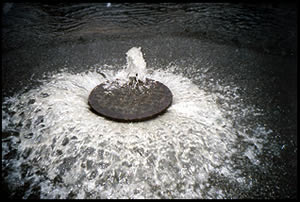 Tuesday, September 24, 2024
Tuesday, September 24, 2024  Tuesday, September 24, 2024
Tuesday, September 24, 2024 
As reported in the Winnipeg Sun, the City of Winnipeg now estimates its master plan to reduce combined sewer overflows could cost up to $2.3 billion, around a billion dollars more than previously expected.
The city also says it could also take 75 years to complete the project, if Winnipeg is forced to be its sole funder.
This week, the city submitted its final master plan to reduce the overflows, also known as CSOs, to the province. CSOs occur where older parts of the Winnipeg sewer system collect both precipitation and wastewater in a single pipe. Heavy rain or snow events can cause those combined sewers to overflow, which sends diluted sewage into the river.
In 2018 alone, those overflows sent 8.7 billion litres of diluted sewage into local waterways. The province has ordered the city to reduce the overflows, which contain algae-promoting phosphorus and nitrogen that eventually winds up in Lake Winnipeg.
The city’s reduction plan aims to capture 85% of all CSOs in an average weather year by 2045, up from the current 74% capture rate.
That effort was previously expected to cost around $1.2 billion back in 2015. But the final master plan notes the price could now reach $2.3 billion, since the class 5 cost estimate is considered accurate within a range of -50% to +100%.
The city says the price could rise by $700 million due to contingencies related to a new method of estimating costs. The final tab is also affected by $200 million of inflationary costs and a $100-million increase to the project’s budget for green infrastructure.